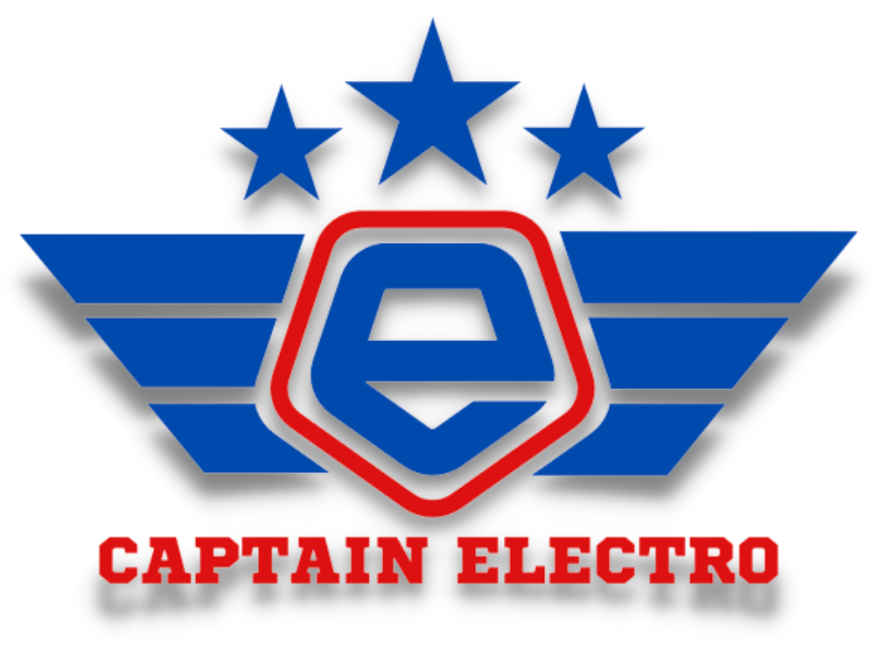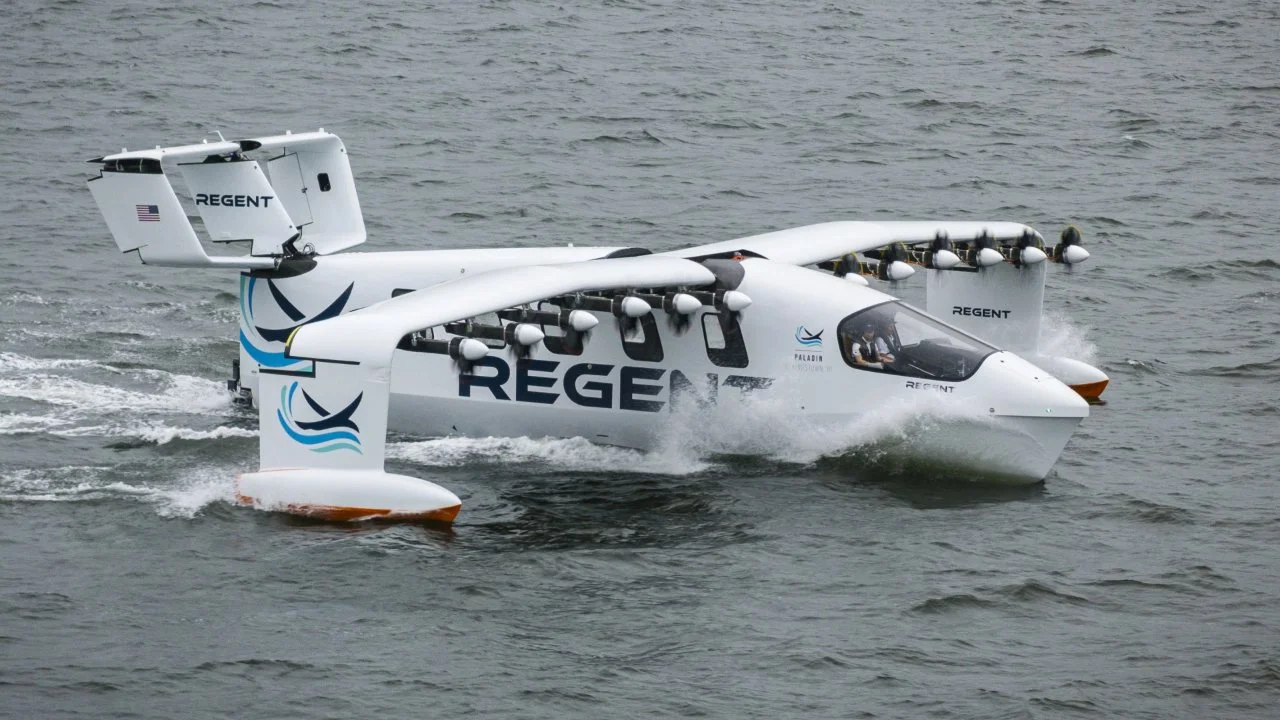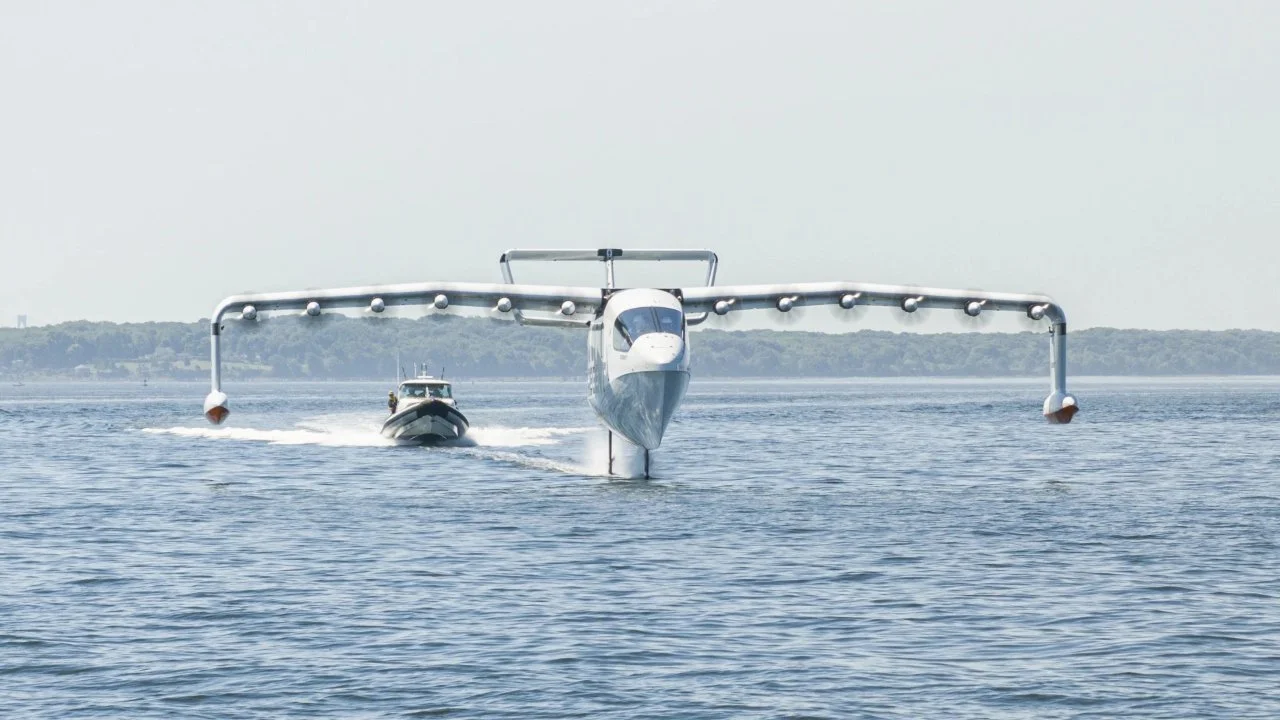Is It a Boat? Is It a Plane? Honestly, I'm Not Sure, But I Want One
Image Credit: Regent.
When a new type of vehicle comes along that genuinely makes me tilt my head and say, "Now what in the world is that?" you know it's something special. Or something completely bonkers. With the Regent Viceroy, I'm leaning toward a glorious combination of both.
This… thing… hails from a startup in Rhode Island, a state known for its charming coastlines and, apparently, for birthing vehicles that defy simple categorization. They call it a "seaglider." A lovely, elegant name for what is essentially a boat that gets ideas above its station, sprouts foils, and then decides to become an airplane, but only a little bit. It's the most brilliantly confused piece of engineering I've seen in years.
Image Credit: Regent.
Let's break down this identity crisis. The Viceroy is a 55-foot-long, 15,000-pound vessel designed to carry 12 souls - one pilot and 11 passengers who have presumably signed a very comprehensive waiver. It begins its journey in what its creators call "float mode." This is, for all intents and purposes, its boat phase. It chugs along on its hull at low speeds, navigating harbors just like any other well-behaved watercraft. All very normal. All very sensible. All very boring.
But then, you clear the harbor, and the pilot gets a mischievous glint in their eye. With a bit more power, the Viceroy enters "foil mode." It rises up on its hydrofoils, lifting its entire hull clear of the water. Suddenly, you're slicing through the waves at nearly 60 mph, feeling less like you're on a ferry and more like you're riding a giant, electric water-strider. Foiling makes the ride smoother, more efficient, and is the critical runway - or "wave-way" - to the main event.
Image Credit: Regent.
This is where things get properly spectacular. Once at speed, the Viceroy enters its final form: "fly mode." The wings, with their impressive 65-foot span, generate enough lift to take the whole craft airborne. But the clever, and slightly unnerving, part is the fact that it never actually flies high. It operates in what's known as "ground-effect," skimming just a few feet above the water's surface. It rides on a cushion of high-pressure air trapped between its wings and the sea. It's flying without the hassle of being actually in the sky.
This trick is the key to its genius. By staying in this ground-effect cushion, it gains a massive efficiency boost. The result? This all-electric wonder promises a range of about 180 miles on a single charge. The company does dangle the tantalizing prospect of 400 or even 500 miles as battery technology improves. That's the age-old "jam tomorrow" promise we hear with every new EV, but honestly, 180 miles of zero-emission coastal hopping is a pretty fantastic start. Imagine nipping between coastal cities without a single traffic jam or airport security line. Yes, please.
Image Credit: Regent.
Of course, the idea of a wing-in-ground-effect vehicle isn't entirely new. Some of you might remember the Soviets' hilariously oversized "Ekranoplans," most famously the "Caspian Sea Monster." They were colossal, fast, and ultimately, a bit rubbish. They were clumsy in anything but the calmest seas and couldn't really operate from a normal port. Regent seems to have learned from history, which is refreshing. The Viceroy's hydrofoils are the secret sauce, allowing it to handle choppy water and maneuver like a proper boat before it takes to its low-altitude flight.
Because this vehicle is so wonderfully weird, it's causing a bit of a headache for the regulators. Is it a plane? Is it a boat? The Federal Aviation Administration (FAA) took one look at it and, presumably after a long sigh, decided that since it never flies higher than its wingspan, it's not their problem. So, the whole regulatory shebang has landed in the lap of the U.S. Coast Guard. I can only imagine the meetings. "So, it foils, and then it flies, but not really. Right. We're going to need a bigger form."
Image Credit: Regent.
Despite the regulatory puzzle, Regent has already successfully tested the foil-borne operations and is aiming for full flight tests in 2025. And it seems the world is taking notice. The company claims to have over $10 billion - that's billion with a 'B' - in pre-orders from ferry operators and airlines worldwide. That's an astonishing vote of confidence. To meet that demand, they're building a massive 255,000-square-foot factory in Rhode Island. This isn't some wild pipe dream being built in a shed. This is a very serious commercial venture.
Here we have an electric vehicle that is part boat, part hydrofoil, and part low-flying aircraft. It promises to be faster than a ferry and more convenient than a plane, all with zero emissions. Honestly, it has to be one of the most exciting developments in electric transport I've seen. Will the Regent Viceroy work? Will it really deliver? The gentle skeptic in me says to wait and see. But the enthusiastic boy who still loves cool machines is screaming, "Please, please, please let this work!"





